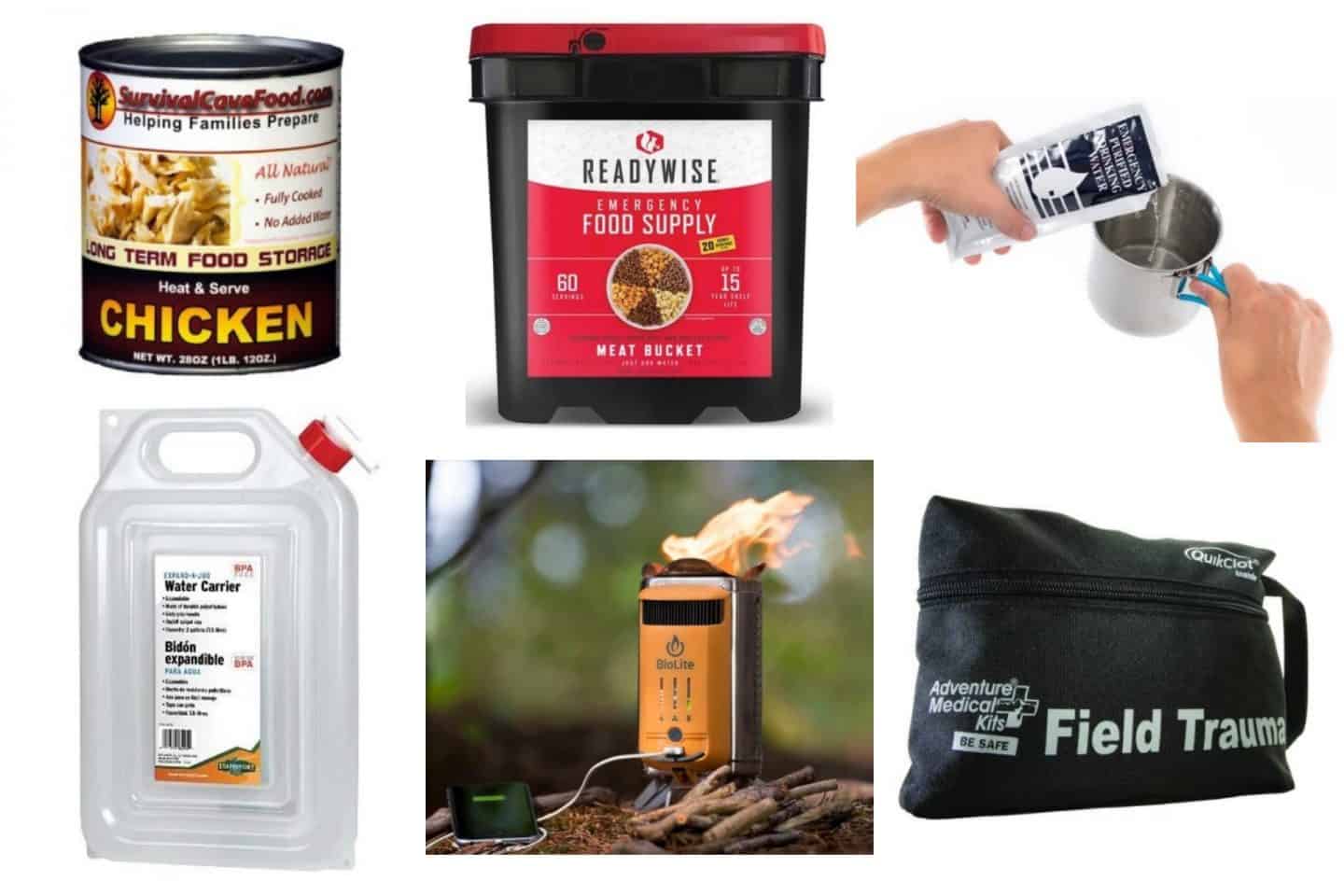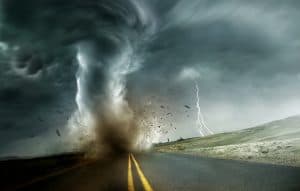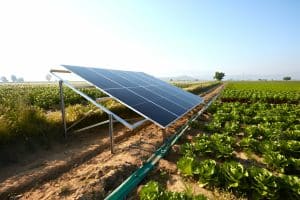In the past few days, parts of United States were hit by severe winds. A derecho, with winds of up to 112 mph, ravaged through an 800-mile stretch along the Midwest affecting Iowa, Nebraska, Wisconsin, Indiana and Illinois. The windstorm destroyed around 10 million acres of crops in Iowa alone. That’s one third of the state’s total crops gone in just under a day.
The derecho, a severe windstorm that travels fast through a straight line, also caused damages to vehicles, houses, and buildings. Around 600,000 customers were left without power. Worst of all, at least two people died during the disaster. One was a 63-year-old from Iowa who was hit by a falling tree while biking. The other victim was a 73-year-old Indiana woman who died in her mobile home while trying to protect a young boy.
It’s hard to imagine how you can stop strong winds like that but you can do something to survive such a disaster. Learn all possible windstorm preparedness tips so you’ll know what to do when it comes.

What is A Windstorm
We’re all familiar with typhoons, cyclones and hurricanes. I’m pretty sure you’ve heard of tornadoes. Yet there are lots of people that don’t know how one differs from another.
The first three natural disasters form over water. A hurricane is a tropical storm that forms over the North Atlantic Ocean and Northeast Pacific Ocean. A typhoon develops over the Northwest Pacific Ocean. Cyclones, meanwhile, start over the South Pacific Ocean and Indian Ocean.

A tornado is a circular windstorm that forms over land. It’s also referred to as a twister in the United States. A windstorm is technically a storm with short violent bursts or long periods of strong winds but without rain or other forms of precipitation. While there are differences among the said calamities, one thing that really resonates — they bring dangerously strong winds.
The National Weather Service will release wind alerts once the possibility of high winds are present. These predictions will give you an idea how bad things can be in case the winds does pick up.
When Should You Worry
Familiarize yourself with the weather alerts. These warnings start off as predictions and will be adjusted when as the situation develops. The alerts will give you an idea of what to expect so you can prepare accordingly.
A high wind watch alert means strong and sustained winds could develop. High wind warning indicates there already are strong and sustained winds with stronger gusts occurring. A wind advisory is similar to a high wind warning thought the wind speeds are slower.

When you are alerted to a severe thunderstorm watch that means it’s possible that a thunderstorm with 58 mph winds or faster will develop. A severe thunderstorm warning is issued when a severe thunderstorm with 58 mph winds or faster is imminent or already occurring.
A hurricane force wind/gale warning will tell those living in coastal regions that high winds are predicted. A dust storm warning, meanwhile, is given out when visibility is reduced to half a mile or less. This is due to dust or sand blown by sustained or gusting winds.
What To Do Before A Windstorm
It’s too late to prepare when the emergency is already knocking on your door. Preppers have gotten some bad rep before but no one was laughing once the pandemic rolled in. That’s because preppers were better equipped to deal with the effects of the pandemic mainly because they had food, water, and other supplies. Everyone should take a page out of their playbook and start taking disaster preparedness seriously.
Prepare Your Emergency Kit
Any list of windstorm preparedness tips is not complete without emergency kits. In fact, you should have emergency kits for all types of disasters.
Food
Never forget to stock up on food. This basic need is hard to come by during and after a disaster. Make sure you always have a full prepper pantry, especially before things go south.
Stock up on foods that don’t easily spoil. You can purchase fresh and raw food, of course, but make sure you use them first, especially when power goes out. Canned goods and dehydrated foods are the best kinds to keep in your pantry.
Survival Cave offers canned meat for long term food storage. Their All Natural Chicken in 28oz jumbo cans has a shelf life of over 25 years. You also don’t have to worry about preservatives, fillers, chemicals, and other nasty stuff.
https://www.youtube.com/watch?v=gjt5jXkMPBI
ReadyWise is a must-have for preppers and survivalists. They have food buckets containing 60 servings of freeze-dried meat including Southwest Style Chicken, Teriyaki Chicken, Roasted Chicken, Stroganoff Beef Cheeesy Beef, and Savory Roasted beef. There are also 20 servings of long-term instant rice. The survival foods are packed in Metallyte Pouches.
Drinking Water
Water is even more important than food. Make sure you have enough drinking water to last until things go back to normal. Remember, the violent winds could possibly affect the water system.
Stock up on emergency drinking water pouches. The ones from SOS Food Lab come in boxes of 96 4.225-ounce packs. Put at least three days’ worth of water in every bug out bag and emergency kit you have.
Once you get wind of an impending calamity, start storing water. Aside from bottled drinking water, you should also fill containers with tap. An Expand-A-Jug 2 Gallon Water Carrier would be pretty useful in these situations. This handy item can carry up to two gallons of water, which is the amount one person needs in three days.

Cooking Items
If power goes out, which is likely during a windstorm, you’ll need a portable stove to cook your food and boil water. The BioLite CampStove 2 with FlexLight fits the bill perfectly. It only needs natural fuel like sticks to keep burning. The smokeless stove can boil a liter of water in just 4.5 minutes. It also comes with a firestarter, FlexLight, and a stuff sack to keep everything safe.
Best of all, the heat from the fire is utilized to generate electricity, which you can then use to charge small devices. So if your phone runs out of juice, simply plug it to the BioLite CampStove using the USB cord included in the set.
First Aid Kit
There’s a good chance that someone will get hurt from all the flying debris and falling objects. You need a first aid kit to immediately treat minor injuries. You also need to undergo basic first aid training.
The Tactical Field Trauma with QuikClot First Aid Kit contains 53 items including different bandages and gauzes and pre-cut Moleskin for burns and blisters. The QuikClot Sport and trauma pad will help stop bleeding while the antiseptic wipes and antibiotic ointment will help treat wounds.

Tools
Hand and power tools will be useful before and after a windstorm. You’ll need a nail gun or cordless drill to secure boards to your windows. You also have to trim or chop down trees. This will keep them from being uprooted possible causing damage on your property or hurting someone.
Use the MTech MT-AXE or Frog & CO Pocket Chainsaw for this task. You should have both so you can ask someone else for help. The more people working on the trees, the faster the job will be done.
These two tools will also be handy after the windstorm. You may need the 11-inch stainless steel camping axe to hack your way through the debris. The pocket chainsaw will help with fallen trees.
Other Survival Items
Evacuation is part of any emergency preparedness plan. When SHTF, you need to be ready to go. Start building your bug out bag if you don’t have one yet. If you don’t know how, start with a pre-packed one.
The LifeShield All-In-One Bug Out Bag includes six different survival kits individually available courtesy of Frog & CO. The six emergency kits are the Warmth & Outdoor Shelter Kit, Emergency Food & Water Kit, Mess Kit, Emergency Light & Communications Kit, Disaster Survival Essentials Kit with Neck Knife, and the Adventure First Aid Tin. All these are packed in one sturdy tan or black backpack.
The LifeShield grab bag comes with a glowstick, emergency candle and the LED Mini Tact Flashlight. It doesn’t include a headlamp, though. The BioLite Ultra-Thin HeadLamp 330 will come in handy when the strong winds take down the power lines. A headlamp allows you to have free use of your hands, which is necessary if you’re trying to find something or someone under the debris.

A word of caution, avoid using candles, oil lamps or anything with fire to provide light. The winds can topple your candle and cause your place to burn down. If you have no other choice, make sure there are no flammable materials nearby.
You’ll also want a Micro Scream Whistle for each member of the household. If one of you is stuck under debris or in any kind of danger, the emergency whistle will help rescuers find you. This particular whistle creates 100 decibels of piercing sound so it should attract attention.
Windproof Your Home
We talked about using tools for boarding windows. This is in fact one of the last things you have to do to protect your home or place of business. To really windproof your home, the first thing you have to do is to check all possible openings that the wind can get through.
Doors and Windows
Number one on the list are your doors and windows. See if any of them needs repair. If there are cracks, seal them with spray foam. Windows that are beyond repair or are too fragile to withstand a windstorm should be replaced. Use double-paned windows to prevent breaking glass. Replace damaged or weak window seals, too. Prepare the boards for your windows. Make them in a way that they can easily be installed and removed.
Reinforce the doors, as well. Severe winds can still blow open your front and back doors even if they’re locked. You’ll need longer screws, quality door hinges, and sturdier strike plates. By reinforcing your doors, you’re also protecting your home from burglars.
Garage Door
If you have a garage door, it also needs to be reinforced. Most homeowners don’t realize that garage doors are one of the weakest points in their home. Burglars, in fact, like garage doors as a huge percentage of home invasions involved these entry points. If you fail to fortify garage doors, they can be blown away by strong winds.
As seen in the video above, you can install horizontal and vertical braces that will provide additional support to your garage door. The metal braces are a bit pricey but that’s a small price to pay compared to having your house blown away. If money is really an issue, you can still reinforce your garage doors with DIY wooden braces like in the video.
Roof
Another common problem during windstorms is the roof. We’ve seen so many roofs being blown away during storms so you should know by now that you need to reinforce them. Check your roof regularly to see if there are loose shingles. Nail them down at once. Apply roofing cement for shingles that don’t need to be nailed.
Attach hurricane clips or tie downs to keep the whole roof from flying. As the name implies, the clips “tie down” the roof to the wall. This is a fairly easy task but you can hire a professional if you want to be sure your roof is properly secured.
Clean Your Surroundings
Do a quick sweep of your yard. Bring indoors everything that can potentially become flying debris such as your dead branches, lawn chairs, barbecue grill, garden tools, and pets. Those you can’t carry, secure them in some way.
Know Where To Go
Wherever you are, you should know where to go when disaster strikes. Are you at work, at school or at home? Do you know where should you go when there’s a high wind warning? Should you stay put or head to a much safer place?
Planning is essential in surviving any emergency. When it comes to windstorms, you need to include every possible shelter you can safely hide. Find out the fastest routes to take towards that shelter.
You have to have a plan before a windstorm or any emergency does come. Knowing what to do and where to go will lessen the chances of panic. We all know what panic does to a person. You lose focus and may end up in a far worse place than before.
Underground Bunker
The safest place to be in during a windstorm is underground. Ideally, you should have an underground bunker or a storm cellar where you can hide during a disaster or emergency. This is especially important if you live in place prone to tornadoes, hurricanes, and windstorms.
Prepare your underground shelter for a possible extended stay. Fill your shelter with food, water, survival gear, and provisions for comfort. You should always prepare for the worst. In case you can’t get out of your shelter just yet, you know you’ll be fine as long as you have supplies.
Reinforce the door to your bunker or storm cellar. In the opening scene of Twister, the family went down to their storm cellar when an F5 tornado passed by. The door was only held by a couple of door latches. They were certainly not enough against a tornado and so the door flew away. Unfortunately, the father was holding onto the door and was carried by the strong winds.
Basement
A basement is the next best thing to a bunker. Just make sure to close all windows and stay away from them. Like with your underground bunker and storm cellar, you need to place supplies in your basement if you’ll make this your shelter. Also reinforce the door, windows, walls, and posts.
Mobile Home
If you reside in a mobile home, there’s very little you can do to stay safe from violent winds. Your best move is to find a safer shelter. One you hear news of a windstorm, pack your stuff quickly and head to the nearest shelter.
What to Do During A Windstorm
It’s not enough to prepare your home for possible disasters. While that’s a huge step towards you and your family’s survival, you should also be aware of what steps to take once the disaster strikes.
Stay Updated
One of the most important windstorm preparedness tips you need to do is to stay alert. As they say, “prevention is better than cure.” While you can’t prevent a windstorm from developing and deciding to hit your area, you can prevent yourself from becoming a helpless victim. That is possible if you do the necessary preparations and if you stay up-to-date.
The moment you hear news of a possible windstorm, start your preparations. This includes boarding up your home and making sure you have enough supplies. Also, keep your bug out bags and car ready in case you have to evacuate.
Stay tuned to news and weather stations so you’re wary of the movement of the storm. The Eton Sidekick Weather Alert Radio provides updated alerts via NOAA and SAME signals. The multi-function radio can be charged on a wall socket, solar power, or hand crank. It comes with alarm clock, LED flashlight, ambient light with dimmer, and a red emergency beacon.
Aside from TV and radio stations, you can also download a weather app to receive alert notifications. Once you’re sure that a windstorm is headed your way, do your last-minute preparations quickly and evacuate.
Stay Indoors
If you’re unable to evacuate to your areas designated shelter and you don’t have a storm cellar or basement, your next best option is stay in your house. That’s perhaps the most logical of all windstorm preparedness tips that we can offer in this case. You don’t want to end up like that cow in Twister, do you?
While inside, make sure all the entry points are closed and secured. Your windows should have been boarded up and your garage door fortified right after you hear the windstorm warning. Once done with your last-minute preparations, grab a bug out bag and settle in the middle of the house, in a small room, or under a stairwell. Other places in your house you can hide in include the bathroom, a closet, or along the narrow hallway. Stay close to the floor and cover your body with a thick blanket and your head with a pillow.
If you took cover in a building, make sure to close and secure all doors and windows. That is if you still have time. In case the winds are already bombarding you, get inside a room somewhere in the middle of the building or structure. If there’s none, just stay in the middle and hold on for dear life. Try tying yourself to something bolted to the ground in case the winds blow the roof off. Also, get as low as possible. The closer you are to the ground, the lesser the chances of being swept by the strong winds.
Take Cover
If for some unfortunate reason that you are caught outside when the windstorm hits, you have to get out of the open. Take cover as quickly as possible. Get inside or under the nearest building or shelter. Again, get to the middle of the shelter and stay close to the ground.
Avoid roads and train tracks. The strong winds may blow you into the path of on oncoming vehicle. Bridges and overpasses are a no-no. Stay away from power lines, trees, and other tall structures, too. It may be difficult to see during a windstorm but you have to watch out for flying debris, cows included.
If there are no shelters nearby, look for a ditch. Lay flat on your stomach and cover your head. In case you’re driving, you have to get off the road. Look for an underground parking area, a garage or any place you can park your car without being exposed to the winds. While driving and looking for safety, slow down and grasp the wheel with both hands.
What To Do After A Windstorm
After the storm has passed, don’t go out just yet. Survey the scenario first. Check on your family if someone is hurt. Apply first aid and call for help if the injury is rat serious.
If you see a downed power line, don’t touch it. Be careful about touching other stuff, too, especially the ones that conduct electricity.
Make sure your phone is fully charged. You need it to make important calls. First, call for medical help if needed. Then inform the authorities of the damages. Call your insurance agent, too, if your house is damaged.

Take these windstorm preparedness tips to heart.Your life and those of your loved ones may depend on them. Check out Gentleman Pirate Club for more prepping and survival tips.
























